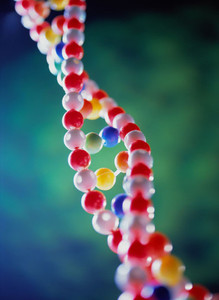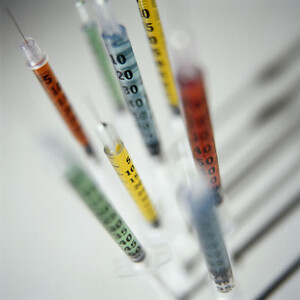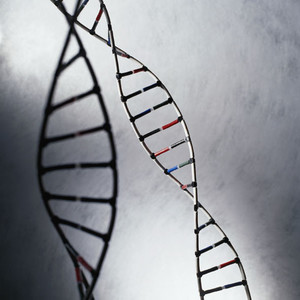As the Federal Trade Commission weighs into the biosimilars debate in the US and the Obama administration considers seven years of market exclusivity enough for brand biologicals, new research by independent market analyst Datamonitor predicts that the success of the emerging biosimilars industry hinges on access to this market. With Japan receiving approval for its first biosimilar and the US moving ever closer to the establishment of an approval pathway, the biosimilars market is set for imminent expansion.
Europe is biosimilar testing ground, but US will be key market
Biosimilars/News
|
Posted 07/09/2009
 0
Post your comment
0
Post your comment

According to Datamonitor, the biosimilars market will grow to more than US$2 billion (Euros 1.4 billion) across the seven major markets (7MM) by 2014 following key patent expires for epoetin alfa, filgrastim, human growth hormone (hGH), insulin-glargine, interferon alfa and interferon beta-1a. While many of these drugs represent the low-hanging fruit of the biologicals world and are unlikely to provide the monetary gains of more complex drugs, they do offer manufacturers the opportunity to position themselves within the biosimilars sector in anticipation of more lucrative targets.
The level of biosimilar uptake will have as much to do with the outcome of the public relations battle between the pro- and anti-biosimilar parties as more tangible absolutes such as biosimilar price and performance. Therefore, just which companies are selling biosimilars will have an impact on uptake across all markets, and especially those that are traditionally brand loyal, says Datamonitor Healthcare Strategy Analyst Ms Pam Narang. “Given that large and established pharma companies are ideally positioned to succeed in the biosimilars sector, it is unsurprising that so many are looking to enter [the market], with Merck & Co and AstraZeneca numbering among these.”
However, in addition to the benefits of brand-recognition, a proven biosimilar track record will be invaluable in promoting uptake, rendering the ostensibly unprofitable first-generation biologicals an attractive prospect. The generally small and simple structure of these biologicals facilitates development and commercialisation and therefore makes them an ideal vehicle through which to enter the biosimilars market relatively rapidly and easily, if not particularly profitably. Indeed, biosimilar insulin-glargine, a second-generation insulin, dominates Datamonitor’s biosimilars forecast, second only to the epoetin alfa biosimilar franchise.
The availability of second-generation biological products that offer superior dosing and/or therapeutic efficacy to the original reference brand is something of a double-edged sword for first-generation biosimilars. Although cost may well drive switching from the second-generation brand to the first-generation biosimilar, the initial switch from the first- to the second-generation brand will have already significantly reduced the market potential, and therefore, attractiveness for prospective first-generation biosimilar players, Ms Narang says. Datamonitor anticipates that the market entry of biosimilar versions of second-generation brands will aggressively erode market share of first-generation biosimilars. “Indeed the decline in biosimilar market size forecast beyond 2014 by Datamonitor is for the most part due to the incursion of second-generation biosimilars,” she says.
US greatest opportunity
The high cost and extensive use of biological drugs, coupled with the growing need to curb pharmaceutical expenditure provides considerable momentum to the emerging biosimilars market. Therefore, Datamonitor anticipates that the extent and rate of biosimilars uptake will be greatest in those markets where the balance of power lies with the payer – Germany, US and the UK – compared to those in which physician prescribing power and brand loyalty hold sway – France, Italy, Spain, and Japan.
As the first to introduce guidelines for biosimilar drug approval, the EU has emerged as the testing ground for biosimilar drugs, with biosimilars for three biologicals having entered the market to date: epoetin alfa, filgrastim and hGH. Unsurprisingly, all were first launched in Germany, the largest generics market in Europe with a high level of uptake for such products. The generic-friendly nature of the German market, driven by strong payer pressure, makes this something of a ‘best-case scenario’ for the biosimilar contingent. Indeed, Datamonitor forecasts that the German biosimilars market will contribute to almost half of all biosimilars market volume and sales through 2012, beyond which it will be overtaken by the US.
The US market represents the greatest opportunity for the emerging biosimilars industry and is forecast to constitute nearly 90% of the 7MM biosimilars market volume in 2014, Ms Narang says. “The size of the US market, combined with the voracious generic erosion that characterises it, makes it an attractive prospect for would-be biosimilars makers. However, this is dependent on the establishment of a biosimilars approval pathway, which Datamonitor anticipates could be in place by 2010, paving the way for biosimilars market entry from 2013,” she says.
Although guidance for biosimilar approval was issued in Japan in 2009, this market is unlikely to experience significant biosimilar incursion through the forecast period; contributing 1% to most of the total 7MM volume in 2019. The historically slow uptake of conventional small-molecule generics suggests that biosimilars will face an uphill struggle in Japan, where distrust of the quality and efficacy of generic drugs from all key stakeholders has hindered uptake to date.
The historically low generics use in France, Italy and Spain will similarly contribute to slower and more limited biosimilars uptake in these markets, collectively forecast to constitute a maximum of 25% of biosimilar market volume in 2012, Ms Narang says. “High brand loyalty and greater physician prescribing power mean that marketing and promotion will be critical to promoting biosimilar uptake. Therefore only the larger and more established companies, with higher brand recognition and marketing budgets, are anticipated to succeed here,” she says.
Source: BioSpectrum, PharmaTimes
Research
Reaching ESG goals in pharmaceutical development
What is the future for the US biosimilar interchangeability designation
General
Samsung Bioepis wins Pyzchiva case; Regeneron patent rulings threaten foreign biosimilars
Chinese biosimilars go global: growth, partnerships, and challenges
EMA recommends approval for four biosimilars targeting three therapies

Biosimilars/News Posted 10/10/2025
FDA approves first interchangeable rapid-acting insulin biosimilar, Kirsty

Biosimilars/News Posted 03/10/2025
The best selling biotechnology drugs of 2008: the next biosimilars targets








Post your comment